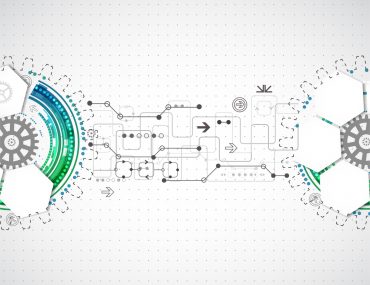
Data overload can often hinder a brand’s ability to create an impactful customer touchpoint or deliver differentiated customer experiences.
Customer data has become as valuable as gold to brands. And as modern marketers access and integrate increasing sources of data, their reserves grow. Such data overload means they are rich with information – but not necessarily the insights necessary to drive high ROI.
An organization’s ability to sustain, compete and thrive is increasingly driven by how well it can deliver differentiated customer experiences – ones that are individualized and consistently delivered across channels. This requires embracing technology to leverage data, apply analytics and orchestrate customer touchpoints across channels in real time. Serving today’s evolving consumers means leaning into data-driven insights to engage them with the right message at the right time. What can often hinder a brand’s ability to create an impactful customer touchpoint, though, is too much data. Unfortunately, data sometimes creates more noise than value.
To better understand this issue of customer data overload, including the challenges and opportunities that lie ahead for brands, I connected with Rob Fuller, Managing Director, Customer Data Orchestration, at Accenture.* Having spent decades working with companies at the intersection of marketing and technology, Rob details how brands can use data to deliver better and more transformative consumer experiences.
Q: What is customer data overload, and what are some challenges it surfaces for brands?
Data overload happens when manual processes, siloed organizational structures, and technologies simply can’t keep pace with the data quantities, speed, and scale that define business today. As a result, brands can miss opportunities to deepen loyalty and glean insights that can inform more efficient engagement and improve CX, or their data quality significantly decreases.
What that means is the more data sources funneling into a brand, the harder it is for them to determine exactly what to do with that information. They simply can’t track everything, which means they must learn to focus on only those sources that hold the most relevant value to their company and current objectives. Otherwise, it is easy to get distracted or lost.
Data overload makes it difficult for marketers to plan campaigns, including the decisions around what’s needed to create the perfect customer experience. When faced with data challenges, marketers often respond by requesting access to more information. If they are having difficulty discerning meaning from the available customer data, they often follow the notion that “more is better.” But what they might not consider is that this adds another layer of complexity. For example, I once witnessed a company managing over 4 billion customer profiles. Did they really have an email address for over half the world’s population, or did they really have a fragmented set of data that needed to be consolidated? The better course of action is to decipher the data that already exists, line it up to the appropriate individual, and determine what is relevant for each individual customer. Rather than further fragmenting the landscape with more data, marketers are better off focusing on a standard set of data and working to increase the accuracy of that data, taking on the quest of better understanding the customer through accuracy rather than breadth.
Q: What advice can you offer marketers for how to best manage data to optimize marketing and customer service for increased revenue?
Instead of worrying about “big data,” marketers should focus more on “smart data.” Prioritize collecting and analyzing the data which will best serve your business and answer your outstanding questions.
Those who have profited most from the explosion in available data are those who have learned to “think smarter” about what to do with it.
A real helpful framing is to think about customer objectives when they interact – why they are visiting, opening, clicking. What data would tell us their purpose, and what data would help them get what they want.
Q: Are there any particular industries that have the most opportunity today when it comes to capitalizing on customer data?
Every industry has room for opportunity as we have a trifecta of reasons:
- Decline of resolution on online media (3rd party cookie reduction and IDFA requiring permission)
- Regulation from California (CCPA) and other states following in direction (Nevada, NY, Mass, Maryland)
- Drastic shifts in consumer behavior (pre-pandemic, pandemic waves, post-pandemic)
To be specific, retail and banking have been comparatively active over the past year, as they have both experienced major shifts to digital platforms and engagements due to the pandemic. More digital touchpoints has meant more available data, so the opportunity to strengthen data control and create more valuable customer moments has grown.
Financial services organizations have a big opportunity now – where the consumer experience relies on trust. Consumers once chose banks based on incentives (e.g., limited-time free checking or a cash-back deposit to open checking and savings accounts). Today, though, they expect more personal rewards for opening accounts. They want banks to go beyond one-time offers and truly understand how to help them reach their future goals. In order to do this, banks need to operate on efficient and relevant data-backed insights. If the financial services sector can strengthen its data control and unification, it has an opportunity to create more trusting customer relationships, helping consumers navigate life events through relevant offers and personalized incentives that demonstrate that they are more than just a potential account number. Again the context of customer objective and customer performance indicators are a key framing to effectiveness.
Q: As economies and industries continue to emerge in new ways from the pandemic, what’s your vision for the future of data and customer experiences?
Brands pivoted going into the pandemic, which we’re seeing again as we pivot out of it. Behaviors have changed, and there’s no going back to what we once thought was “normal.”
As we move forward, consistent observance and adjustments to align with consumer expectations and behaviors will be key. For instance, consumers used to go to the grocery store and stop at the bank on their way home from work. But now, some people are, and will continue to be, only in the office for part of the week – if at all. Some have been out of work and may be more economically challenged, meaning their shopping behaviors will change. At the same time, others saved from working remotely and not going out on weekends, meaning they will have more disposable income. Brands need to understand how these occurrences will impact future consumer buying patterns.
Disruption will continue, and a large amount of untapped opportunity awaits. As brands look to reach consumers with personalized experiences that match their current lifestyle, data will be key. It all still comes down to using the right data at the right time with the right audience.

- Rob Fuller is the Customer Data Orchestration Practice Lead for Accenture, focusing on how brands collect, manage, and integrate customer data. He has spent over 20 years delivering digital solutions to clients across a wide variety of industries and loves finding new ways of improving customer experience.





























